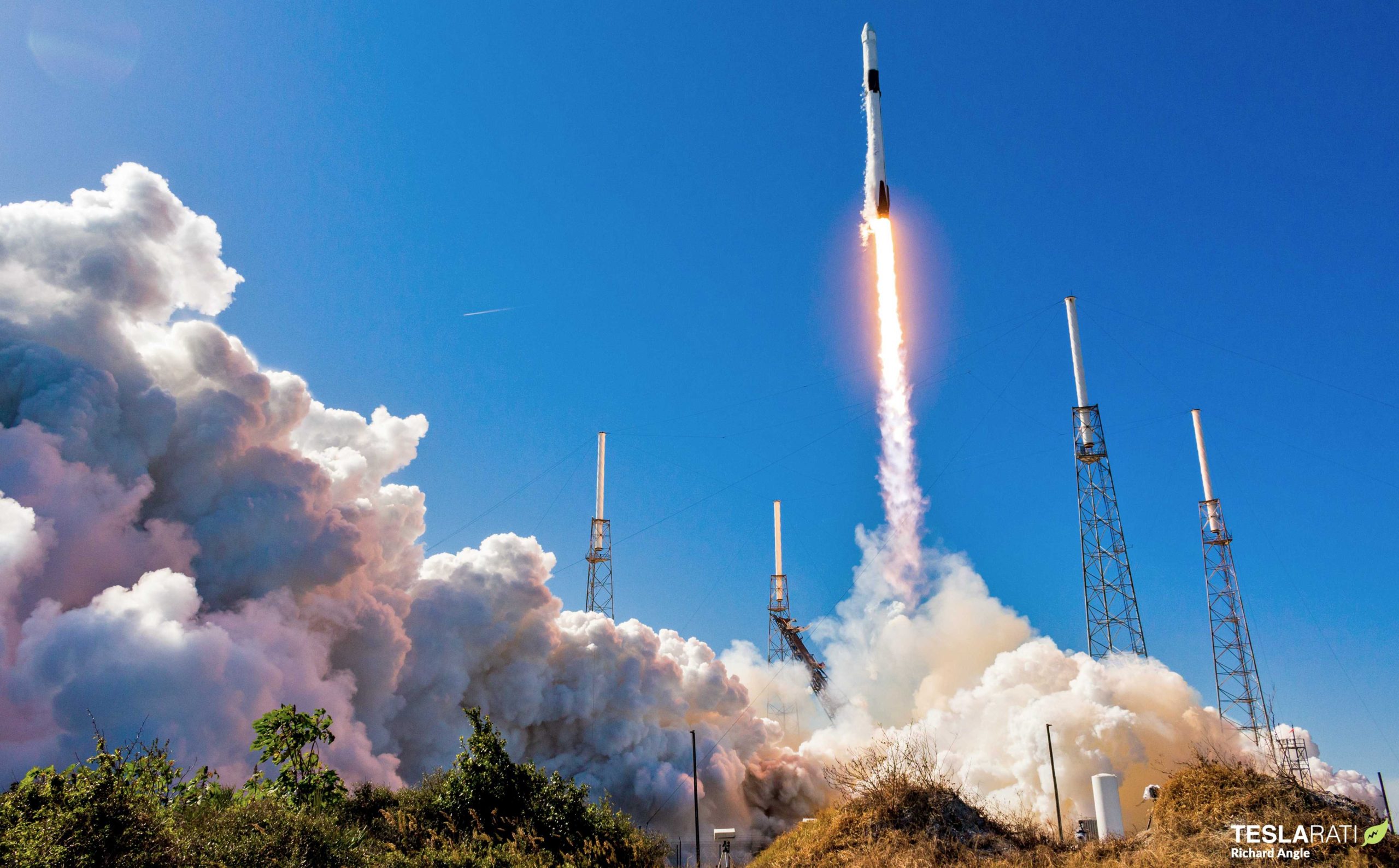
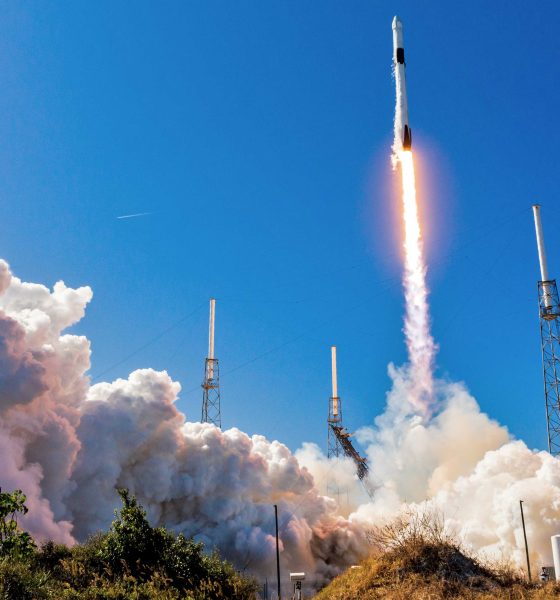
Space
SpaceX wins NASA contract to launch Earth Observing System, but current administration has other plans
SpaceX recently snagged an $80.4 million NASA contract to launch an upcoming Earth-observing satellite sometime in 2022. That is, if the mission isn’t scrapped due to budgetary issues.
A used Falcon 9 rocket is slated to ferry the 3,748-lb. (1,700 kg) Plankton, Aerosol, Cloud, and ocean Ecosystem satellite (aka PACE) to orbit sometime in December 2022. The mission, which provides data on oceans and particles in the atmosphere, is expected to launch from Cape Canaveral Air Force Station in Florida.
Its goal: to help us better understand our home planet. SpaceX is expanding its portfolio, after receiving certification for science launches in 2016. To date, SpaceX launched a bevy of scientific satellites including Jason-3 in 2106, the Transiting Exoplanet Survey Satellite (TESS) and GRACE-FO missions in 2018, and the upcoming Sentinel 6A in Nov. 2020.
But it’s been a tough journey for PACE. The satellite has been on the chopping block several times, but managed to avoid getting the ax so far.
That’s because the Trump administration has tried to cancel the ocean-watching mission three separate times now, in an effort to reduce the Earth science budget. Each time the president has tried to cut its funding, Congress voted to support it, including authorizing $131 million for the mission in December 2019.
So NASA has moved ahead with the development of the mission, and selected SpaceX as the launch provider on Feb. 4.
“SpaceX is honored to continue supporting NASA’s critical scientific observational missions by launching PACE, which will help humanity better understand, protect and preserve our planet,” Gwynne Shotwell, SpaceX’s president and chief operating officer, said in a company statement.
PACE will focus on our planet’s oceans, the clouds, and aerosols (small air particles) in an effort to better understand phytoplankton — tiny plant-like organisms in the ocean that are the base of the food chain. These organisms can tell us a lot about how climate change is affecting the environment.
“PACE will help scientists investigate the diversity of organisms fueling marine food webs and the U.S. economy, and deliver advanced data products to reduce uncertainties in global climate models and improve our interdisciplinary understanding of the Earth system,” NASA said in a statement.
“It will also continue systematic records of key atmospheric variables associated with air quality and Earth’s climate,” officials wrote on the PACE mission’s website.
Like most plants, phytoplankton relies on chlorophyll to capture sunlight, and then using photosynthesis to turn it into chemical energy, releasing oxygen as a byproduct.

Phytoplankton are a diverse variety of species and their growth depends on the availability of things like carbon dioxide, sunlight, and nutrients. Just like their terrestrial counterparts, phytoplankton require can nutrients such as nitrate, phosphate, silicate, and calcium, depending on the species.
Other factors that influence growth rates are water temperature and salinity, water depth, wind, as well as what sort of predators are nearby.
When conditions are just right, phytoplankton populations can grow explosively, a phenomenon we call a bloom. Blooms in the ocean may cover hundreds of square kilometers and are easily spotted in satellite imagery. A bloom may last several weeks, although the life expectancy of any individual organism is rarely more than a few days.
Phytoplankton are important because they are the foundation of the aquatic food web, feeding many different creatures from other microscopic organisms to enormous, mega-ton whales.
Phytoplankton aren’t always a good thing — certain species are known to produce powerful biotoxins, like the red tide. These toxic blooms can kill marine life and ultimately people if they accidentally eat contaminated seafood or by inhaling the organisms.
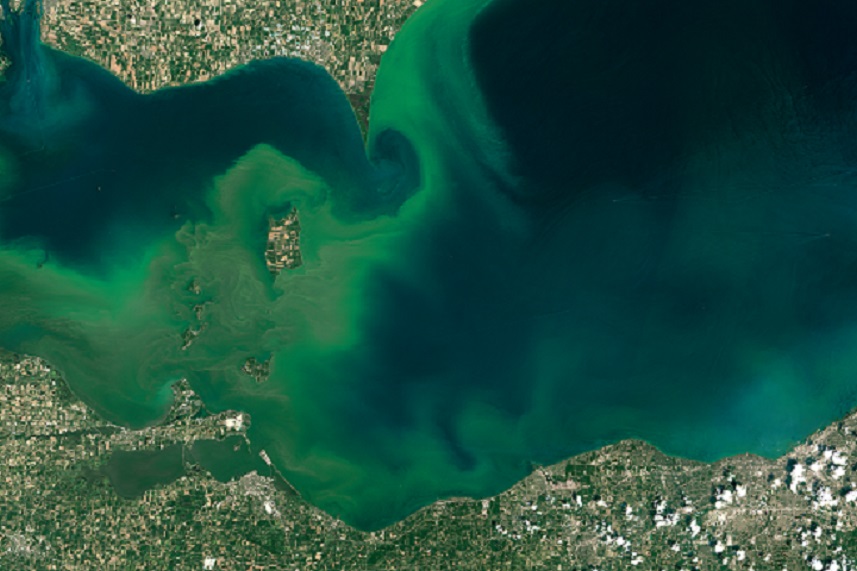
PACE’s primary tool is called the Ocean Color Instrument (OCI). It will measure the color of the ocean in a broad range of wavelengths, from ultraviolet to shortwave infrared, according to NASA. The satellite will observe the Earth from an orbital perch about 420 miles (675 kilometers) above the planet. (For reference, the space station orbits at 250 miles or 400 km up.)
“The color of the ocean is determined by the interaction of sunlight with substances or particles present in seawater, such as chlorophyll, a green pigment found in most phytoplankton species,” according to the mission’s website. “By monitoring global phytoplankton distribution and abundance with unprecedented detail, the OCI will help us to better understand the complex systems that drive ocean ecology.”
PACE will be in a sun-synchronous orbit, which will allow for consistent daylight conditions for imaging. This makes it easier for scientists to compare different regions and the same regions over long periods of time — if the satellite makes it to orbit.
Today, the president released his budget request for 2021, and once again, PACE is one of two Earth science missions he wants to cancel. Will its luck hold out? Will Congress vote to approve funding for the vital satellite despite the president’s suggestion? Only time will tell.
But with many coastal states recently suffering from red tide, this satellite will be a valuable tool in scientists’ arsenal to help them better understand these tiny organisms.

Cybertruck
Tesla Cybertruck fleet takes over at SpaceX’s Starbase
Interestingly, the Cybertruck uses the same exterior, a stainless steel alloy, as SpaceX rockets. This synergy between the two companies and their very different products shows a very unified mentality between Musk companies.
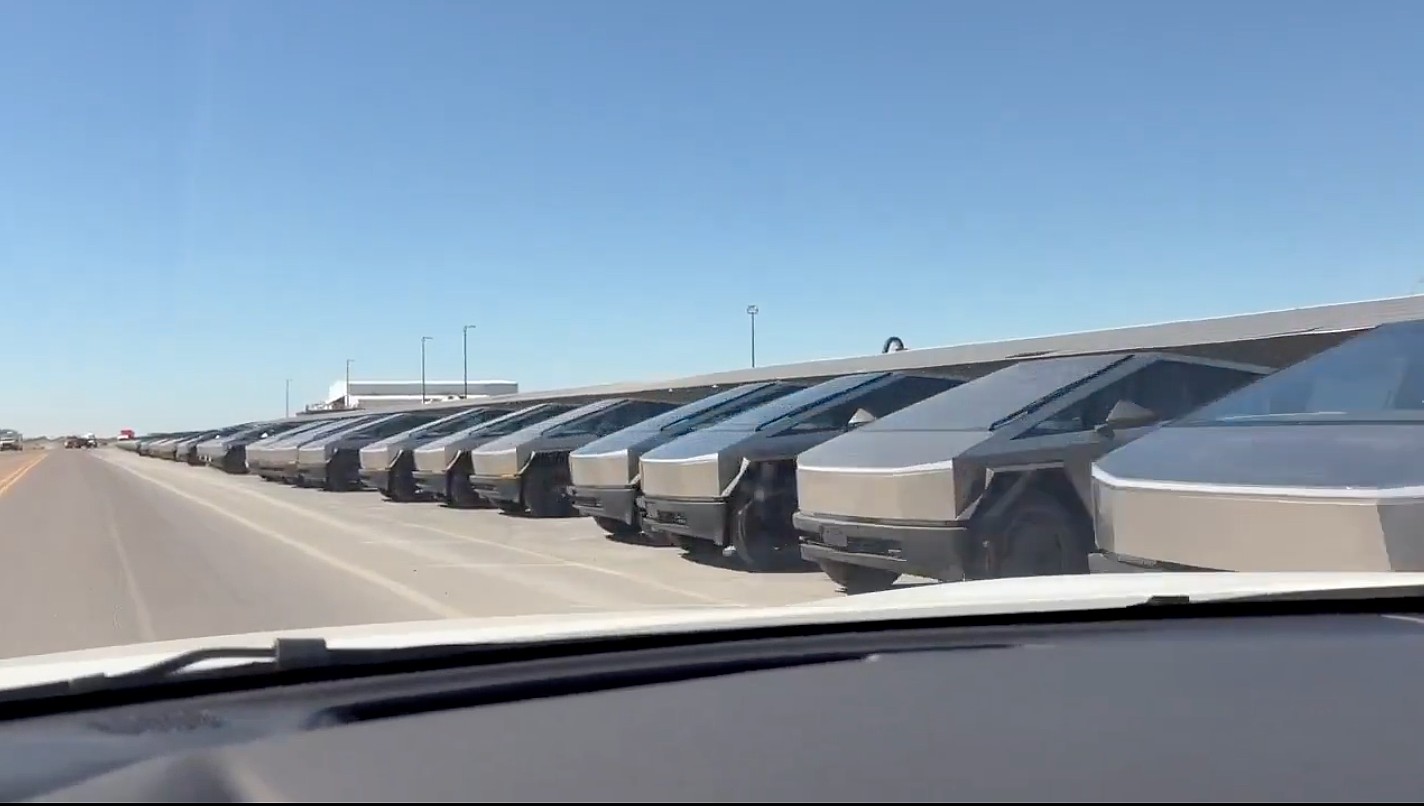
Tesla Cybertrucks have taken over at SpaceX’s Starbase facility in Texas, as hundreds of the all-electric pickup trucks were spotted late last week rounding out a massive fleet of vehicles.
The Cybertruck fleet is geared toward replacing gas vehicles that are used at Starbase for everyday operations. The only surprise about this is that it was not done sooner:
Was just visiting. pic.twitter.com/5Q9wPPaeuH
— Derek Li (@derek1ee) October 31, 2025
Deliveries have been going on for a few weeks, as Cybertrucks have made their way across the state of Texas from Austin to Starbase so they could be included in SpaceX’s fleet of vehicles at the facility.
Interestingly, the Cybertruck uses the same exterior, a stainless steel alloy, as SpaceX rockets. This synergy between the two companies and their very different products shows a very unified mentality between Musk companies.
However, there are some other perspectives to consider as SpaceX is utilizing such a massive fleet of Cybertrucks. Some media outlets (unsurprisingly) are seeing this as a move of weakness by both Tesla and SpaceX, as the aerospace company is, in a sense, “bailing out” lagging sales for the all-electric pickup.
It’s no secret that Tesla has struggled with the Cybertruck this year, and deliveries have been underwhelming in the sense that the company was anticipating between 1 million and 2 million orders for the vehicle before it was widely produced.
A lot of things changed with the Cybertruck between its 2019 unveiling and 2023 initial deliveries, most notably, price.
The price of the Cybertruck swelled significantly and priced out many of those who had pre-ordered it. Some have weighed the option of whether this purchase was a way to get rid of sitting inventory.
However, it seems more logical to consider the fact that SpaceX was likely always going to transition to Teslas for its fleet, especially at Starship, at some point.
It doesn’t seem out of the question that one Musk company would utilize another Musk company’s products, especially considering the Cybertruck has been teased as the vehicle that would be present on Mars.
News
SpaceX opens up free Starlink service for those impacted by Hurricane Melissa

SpaceX is opening up its internet service, Starlink, to those impacted by Hurricane Melissa, as it made landfall in Jamaica and the Bahamas as a Category 5 storm.
Hurricane Melissa is expected to reach wind speeds of over 165 MPH over the next few days as it extends out into the Atlantic Ocean by Thursday and Friday.
Satellite imagery shows Hurricane #Melissa‘s growth from its formation on October 21 to a Category 5 hurricane through October 27, 2025. #HurricaneMelissa pic.twitter.com/goR3Hbgb9c
— The Weather Network (@weathernetwork) October 27, 2025
Citizens in Jamaica and the Bahamas have been preparing for the storm for the past week, getting necessary goods together and preparing for the massive storm to arrive. It finally did yesterday, and the first images and video of the storm are showing that it could destroy many parts of both countries.
Starlink is now being opened up for free until the end of November for those impacted by the storm in Jamaica and the Bahamas, SpaceX announced today:
For those impacted by Hurricane Melissa in Jamaica and the Bahamas, Starlink service is now free through the end of November to help with response and recovery efforts → https://t.co/fUko3xSviJ
— Starlink (@Starlink) October 28, 2025
It is a move similar to the one the company made last year as Hurricane Helene made its way through the United States, destroying homes and property across the East Coast. SpaceX offered free service for those impacted by the destruction caused by the storm.
The free Starlink service was available until the end of 2024.
Elon Musk’s companies have also made similar moves to help out those who are impacted by natural disasters. Tesla has offered Free Supercharging in the past, most notably during the California wildfires.
Tesla and SpaceX’s LA fire relief efforts: Cybertrucks, free Starlink and more
One major advantage of Starlink is that it is available for use in situations like this one, where power might be required to operate things like a modem and router.
Internet access is a crucial part of survival in these situations, especially as it can be the last leg some stand on to get in touch with emergency services or loved ones.
News
SpaceX reaches incredible Starlink milestone
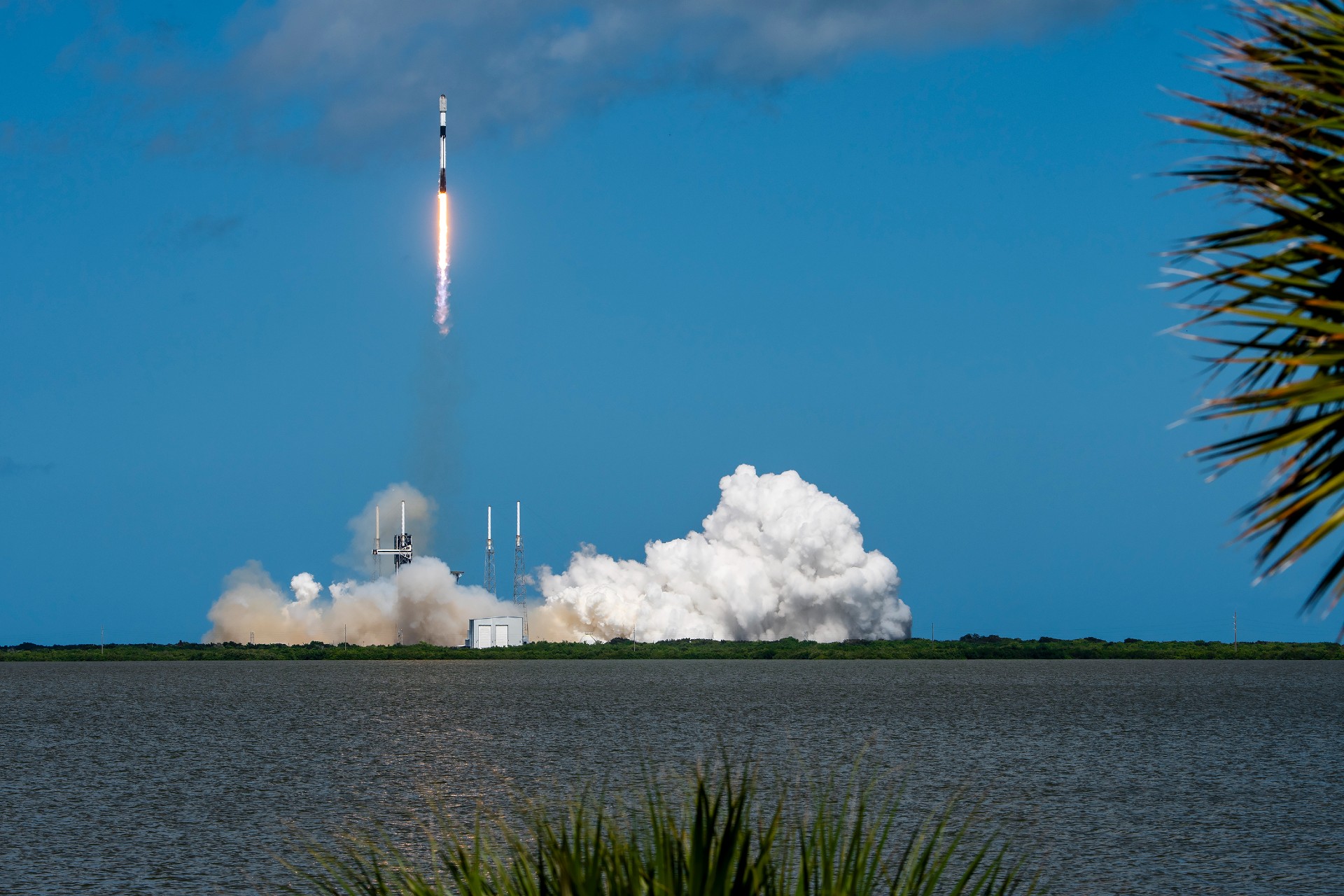
SpaceX has reached an incredible milestone with its Starlink program, officially surpassing 10,000 satellites launched into low Earth orbit since starting the program back in 2019.
Last Sunday, October 19, SpaceX launched its 131st and 132nd Falcon 9 missions of 2025, one from Cape Canaveral, Florida, and the other from Vandenberg, California.
The 10,000th Starlink satellite was aboard the launch from California, which was Starlink 11-19, and held 28 v2 mini optimized satellites.
The achievement was marked by a satellite tracker developed by Jonathan McDowell.
🚨 With its Falcon 9 launch last Sunday, SpaceX officially has 10,000 Starlink satellites in orbit pic.twitter.com/xS5RVZ4ix0
— TESLARATI (@Teslarati) October 26, 2025
The first Starlink launch was all the way back on May 23, 2019, as SpaceX launched its first 60 satellites from Cape Canaveral using a Falcon 9 rocket.
Of the over 10,000 satellites in orbit, the tracker says 8,608 are operational, as some are intentionally de-orbited after becoming faulty and destroyed in the atmosphere.
SpaceX has truly done some really incredible things during its development of the Starlink program, including launch coverage in a global setting, bringing along millions of active subscribers that use the service for personal and business use, locking up commercial partnerships, and more.
Starlink currently operates in around 150 countries, territories, and markets and is available at least somewhere on all seven continents.
Additionally, Starlink has over 5 million subscribers worldwide, and 2.7 million have joined the program over the past year. It has revolutionized internet access on commercial aircraft as well, as several high-profile airlines like Qatar and United, among many others, have already installed Starlink on some of their planes to deliver more stable connectivity for passengers and crew.
SpaceX has the approval to launch 12,000 Starlink satellites from the FAA, but it plans to bring over 30,000 to its constellation, giving anyone the ability to have access to high-speed internet.









